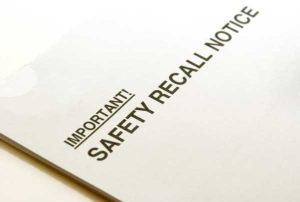 We all work hard to properly teach our children about all of the potential dangers in the outside world, such as traffic, strangers, and more. However, how often do you take a look to examine how safe your children may be when they are inside your home? Most people likely assume that their homes are safe for their families as they likely considered safety when they carefully chose appliances and other products. Parents are generally especially careful when they select from the wide range of baby and child-related products that are available. No matter how careful you may be, however, you may have defective products in your home that have the potential to malfunction and cause serious injury to members of your family.
We all work hard to properly teach our children about all of the potential dangers in the outside world, such as traffic, strangers, and more. However, how often do you take a look to examine how safe your children may be when they are inside your home? Most people likely assume that their homes are safe for their families as they likely considered safety when they carefully chose appliances and other products. Parents are generally especially careful when they select from the wide range of baby and child-related products that are available. No matter how careful you may be, however, you may have defective products in your home that have the potential to malfunction and cause serious injury to members of your family.
Negligent Manufacturers
Manufacturers of consumer products have a legal duty to sell products that are safe for their intended use by the individuals who purchase them. Unfortunately, manufacturers can make errors and defective and/or dangerous products make it onto shelves and into stores and can, ultimately, cause injury to you or your family.
Products can be defective three primary ways, as follows:
- Defective design, which means that the product was defective from the literal drawing board, and every product that came from that design likely has the defect.
- Defective assembly, which means that though the product was correctly designed, defects arose due to poor workmanship, using the wrong materials, or other mistakes in the assembly process.
- Failure to warn, which means that a company did not place adequate warnings for consumers if it knew of a possibly dangerous quality of the product.
If any of the above occur and a consumer suffers injury as a result, a manufacturer may likely be found negligent and responsible for the losses the injured victim incurred due to their injuries under the legal concept of products liability.
Role of the CPSC

The United States Consumer Product Safety Commission (CPSC)[2] is the federal agency in charge of trying to keep the public safe from the unreasonable risks of serious or even fatal injury that may be caused by the hundreds of thousands of consumer products for sale in the U.S. Such injuries reportedly cost the U.S. over $1 trillion on an annual basis. For this reason—and for the physical safety of American families—the CPSC has worked for 40 years to keep defective and dangerous products off the shelves.
The CPSC plays the following roles in its attempt to protect consumers:
- Collects and compiles reports of consumer injury and death due to consumer products
- Enforces a number of regulations and statutes[3] that are related to consumer products safety
- Recommends and oversees product recalls
- Imposes penalties on corporations that refuse to comply with product recalls
What is a Product Recall?
A product recall occurs when a company admits that a product it sold is defective or unsafe and requests that consumers return the product to the company. The manufacturer will then either repair the product (if possible) or will replace the defective product with a safe one. New consumer product recalls are issued in the United States on a regular basis. The CPSC lists all issued recalls on its website[4] for easy reference for consumers. If you believe that a product you have may be defective, you can search the recall list to see if a recall has been issued for that product.
Potentially Dangerous Infant and Child Products
As previously mentioned, choosing the right baby and child products is often a painstaking process for parents. With so many options available for each different type of product, parents usually work diligently to select the right ones for their child. However, no matter how careful parents may be, they may still unknowingly end up purchasing defective products that may cause injury to their child. Some examples of child products that are commonly recalled due to defects include the following:
- Slings and back pack carriers – The straps on these infant carriers can break and cause a baby to tumble to the ground.
- Strollers – Parts can collapse and cause falls or cause a child’s fingers to get pinched in folding parts.
- Cribs – The sides of some cribs have been known to detach, causing children to roll out of the crib or become trapped under the side. Drop-side and convertible cribs can be particularly dangerous.
- Toys – Many different kinds of toys are regularly recalled, mostly due to potential choking hazards[5] or contaminated materials.
- Car seats – The latches and other parts of car seats can malfunction and not provide adequate protection for child passengers.
These are only a few of the many different child products that may be defective and injure children in your home.
Home Appliances That Can Cause Injury

Thousands of people are injured by seemingly innocuous home appliances on a daily basis. The injuries that victims sustain can be serious, sometimes requiring intensive medical care and even causing long-term medical problems. In particularly serious cases, those affected may be develop disabilities that keep them from working or even engaging in everyday activities. Some of the more common kinds of home appliances that often cause injury include:
- Refrigerators
- Televisions
- Hairdryers
- Space heaters
- Washers and dryers
- Toaster ovens
- Dishwashers
- Microwaves
- Ceiling fans
- Curling irons
- Computers
- Coffee makers
Home appliances can cause accidents in a variety of different ways. For example, an appliance may be defectively manufactured or designed in such a way as to cause the appliance to be unstable and pose an unreasonable risk of falling over. In other cases, the hazard posed by an appliance may stem from faulty electrical wiring creating a risk of electrical shock. Furthermore, many different home appliances have the potential to malfunction and start a fire, which can cause severe burn injuries.[6] The above are only a few examples of products in your home that may cause injury.